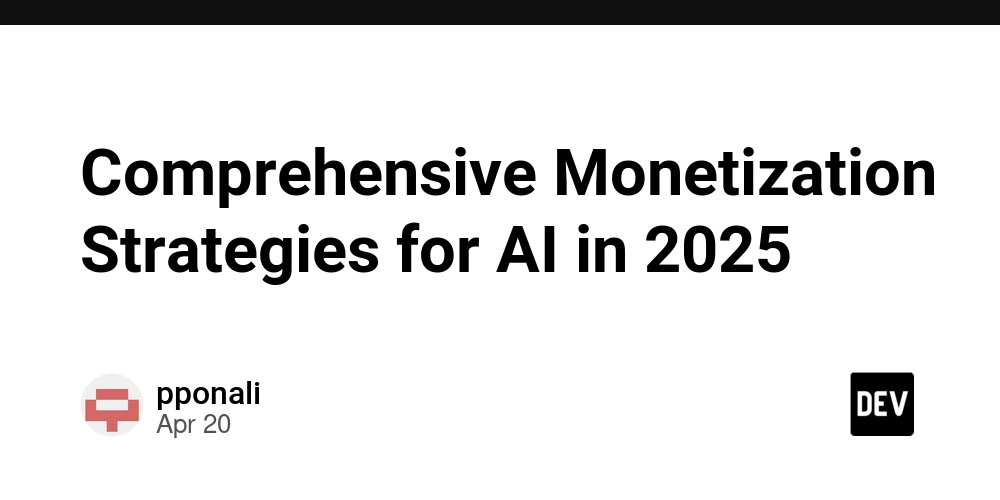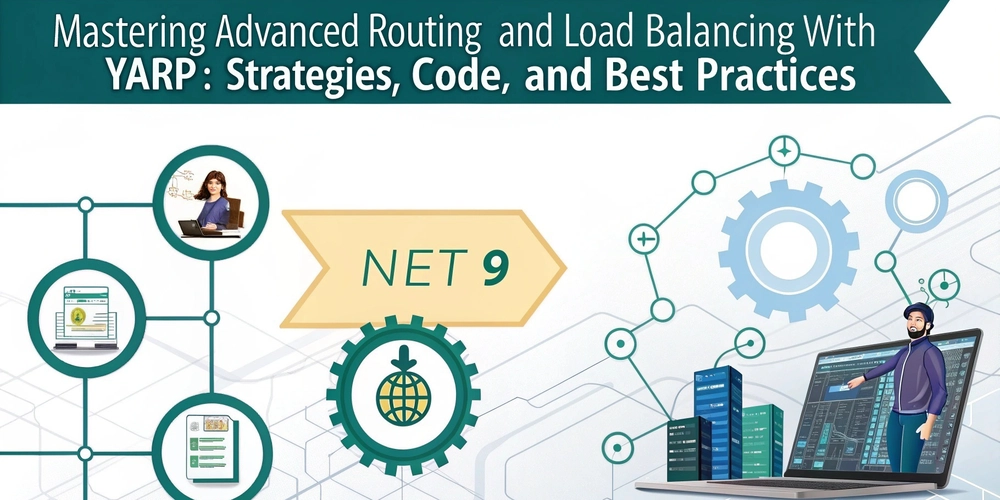Comprehensive Monetization Strategies for AI in 2025
Comprehensive Monetization Strategies for AI in 2025 Generated: 2025-04-20 11:00:34 As we navigate the ever-evolving landscape of artificial intelligence (AI), it’s essential for organizations, educational institutions, and industries to capitalize on its potential through effective monetization strategies. The following comprehensive monetization plan showcases various strategies tailored to different segments of the AI market, particularly in 2025. Each strategy is underpinned by data and insights that illustrate why they are valuable, along with actionable advice to implement these strategies effectively. Understanding the Target Audience To successfully monetize AI technologies, it’s crucial to understand the distinct needs of three key stakeholder segments: enterprises, educational institutions, and the healthcare sector. Enterprises: The corporate world, particularly Fortune 500 companies, is rapidly adopting AI solutions, with reports indicating a staggering 70% reliance on tools like Microsoft 365 Copilot to enhance productivity. Automated tasks are becoming the norm, and companies are seeking high-efficiency operational models. Educational Institutions: Schools and universities recognize the importance of teaching AI fundamentals, with global usage of AI models like OpenAI increasing by 50%. This sector seeks innovative tools that can educate both instructors and students on real-world applications of AI, thus fostering future professionals. Healthcare Sector: With 30% of the healthcare analytics market captured by platforms such as Azure AI Foundry, hospitals and research institutions are leveraging AI for effective decision-making and improved patient outcomes. This market’s desire for customized and scalable solutions presents a unique monetization opportunity. Core Value Proposition The value proposition for AI technologies is built upon three pillars: productivity enhancement, innovation support, and cost-effectiveness. Productivity Enhancement: Integrating AI tools can increase workplace efficiency by 25%. For example, Microsoft 365 Copilot simplifies workflow management and document processing for enterprises. This creates a clear use case that organizations can latch onto while redefining their operational strategies. Innovation Support: Advanced AI models like Phi and Orca facilitate cutting-edge projects in drug discovery and real-time analytics. By showcasing how AI can elevate innovation in diagnostics or treatment methodologies, stakeholders in healthcare and pharmaceuticals see clear advantages. Cost-Effectiveness: AI technologies are generally more resource-efficient, allowing businesses to reduce operational costs while enhancing their data analysis capabilities. This leads to attractive cost-benefit ratios, especially for budget-conscious enterprises looking to optimize spending. Standard Monetization Streams The following are conventional, yet highly effective, monetization strategies for AI services: 1. Subscription Models for AI Services Description: Implement tiered subscription plans to cater to organizations of varying sizes through platforms like Microsoft 365. Example: Microsoft 365 offers diverse subsсription tiers tailormade for enterprises, small businesses, and education institutions. These packages are designed according to user needs, allowing companies to choose the level of service that aligns best with their operational goals. Justification: Subscription models stabilize revenue forecasting and maintain customer engagement. Aiming for a 15-20% annual increase in subscription revenue is a realistic target based on trends within the market. 2. Custom AI Solutions for Enterprises Description: Development of tailored AI solutions is essential to meet specific enterprise challenges and integrate seamlessly into existing workflows. Example: Utilizing OpenAI technologies to provide tools for research institutions working on unique scientific projects. This could include the deployment of AI-driven analytics tools that can be customized in real-time, greatly enhancing the quality of research outcomes. Justification: These custom solutions foster long-term client relationships and provide significant opportunities for engagement through high-value contracts, improving customer retention. 3. Productivity Tools Integration Description: Integrating AI capabilities into existing productivity tools can result in expanded business growth. Example: Incorporate Microsoft Copilot into collaboration software like Teams. Businesses can expect notable productivity increases, often quantified at around 25% improvement in project timelines and workflows. Justification: Highlighting quantifiable productivity enhancements can prompt more substantial investment in integrated systems among enterprises that recognize the value afforded by these tools. Creative Monetization Streams Mo

Comprehensive Monetization Strategies for AI in 2025
Generated: 2025-04-20 11:00:34
As we navigate the ever-evolving landscape of artificial intelligence (AI), it’s essential for organizations, educational institutions, and industries to capitalize on its potential through effective monetization strategies. The following comprehensive monetization plan showcases various strategies tailored to different segments of the AI market, particularly in 2025. Each strategy is underpinned by data and insights that illustrate why they are valuable, along with actionable advice to implement these strategies effectively.
Understanding the Target Audience
To successfully monetize AI technologies, it’s crucial to understand the distinct needs of three key stakeholder segments: enterprises, educational institutions, and the healthcare sector.
Enterprises: The corporate world, particularly Fortune 500 companies, is rapidly adopting AI solutions, with reports indicating a staggering 70% reliance on tools like Microsoft 365 Copilot to enhance productivity. Automated tasks are becoming the norm, and companies are seeking high-efficiency operational models.
Educational Institutions: Schools and universities recognize the importance of teaching AI fundamentals, with global usage of AI models like OpenAI increasing by 50%. This sector seeks innovative tools that can educate both instructors and students on real-world applications of AI, thus fostering future professionals.
Healthcare Sector: With 30% of the healthcare analytics market captured by platforms such as Azure AI Foundry, hospitals and research institutions are leveraging AI for effective decision-making and improved patient outcomes. This market’s desire for customized and scalable solutions presents a unique monetization opportunity.
Core Value Proposition
The value proposition for AI technologies is built upon three pillars: productivity enhancement, innovation support, and cost-effectiveness.
Productivity Enhancement: Integrating AI tools can increase workplace efficiency by 25%. For example, Microsoft 365 Copilot simplifies workflow management and document processing for enterprises. This creates a clear use case that organizations can latch onto while redefining their operational strategies.
Innovation Support: Advanced AI models like Phi and Orca facilitate cutting-edge projects in drug discovery and real-time analytics. By showcasing how AI can elevate innovation in diagnostics or treatment methodologies, stakeholders in healthcare and pharmaceuticals see clear advantages.
Cost-Effectiveness: AI technologies are generally more resource-efficient, allowing businesses to reduce operational costs while enhancing their data analysis capabilities. This leads to attractive cost-benefit ratios, especially for budget-conscious enterprises looking to optimize spending.
Standard Monetization Streams
The following are conventional, yet highly effective, monetization strategies for AI services:
1. Subscription Models for AI Services
Description: Implement tiered subscription plans to cater to organizations of varying sizes through platforms like Microsoft 365.
Example: Microsoft 365 offers diverse subsсription tiers tailormade for enterprises, small businesses, and education institutions. These packages are designed according to user needs, allowing companies to choose the level of service that aligns best with their operational goals.
Justification: Subscription models stabilize revenue forecasting and maintain customer engagement. Aiming for a 15-20% annual increase in subscription revenue is a realistic target based on trends within the market.
2. Custom AI Solutions for Enterprises
Description: Development of tailored AI solutions is essential to meet specific enterprise challenges and integrate seamlessly into existing workflows.
Example: Utilizing OpenAI technologies to provide tools for research institutions working on unique scientific projects. This could include the deployment of AI-driven analytics tools that can be customized in real-time, greatly enhancing the quality of research outcomes.
Justification: These custom solutions foster long-term client relationships and provide significant opportunities for engagement through high-value contracts, improving customer retention.
3. Productivity Tools Integration
Description: Integrating AI capabilities into existing productivity tools can result in expanded business growth.
Example: Incorporate Microsoft Copilot into collaboration software like Teams. Businesses can expect notable productivity increases, often quantified at around 25% improvement in project timelines and workflows.
Justification: Highlighting quantifiable productivity enhancements can prompt more substantial investment in integrated systems among enterprises that recognize the value afforded by these tools.
Creative Monetization Streams
Moving beyond traditional models, innovative monetization streams are necessary to augment revenue:
1. Educational Partnerships
Description: Form collaborations with educational platforms to provide AI training and certifications, ensuring the future generation is well-versed in AI tools.
Example: Partnering with platforms like Coursera or Udacity to offer specialized AI courses designed to help professionals understand the implications of AI on their fields.
Justification: As awareness grows surrounding AI’s potential, providing accessible knowledge will drive future product adoption, creating additional revenue streams through course enrollments.
2. Sponsorship of AI Innovation Events
Description: Create sponsorship packages for industry-specific events focused on AI innovations.
Example: Hosting or sponsoring hackathons, webinars, or tech summits where businesses can engage directly with prospective clients and enhance visibility.
Justification: Such platforms yield networking opportunities while advertising an organization’s commitment to ethical AI practices.
3. Community Crowdfunding for AI Projects
Description: Implement crowdfunding strategies to finance new AI model developments.
Example: Launching an initiative for community-driven AI projects, such as an AI-assisted protein simulation system called AI2BMD where community feedback informs the development process.
Justification: Tapping into willing communities encourages participation and support while mitigating financial risks for the organization—they invest and shape the project directly.
Implementation Priorities
To maximize the effectiveness of the monetization strategies outlined, attention should be given to the following implementation priorities:
Develop User-Centric Subscription Plans: Execute a clear launch strategy for tiered subscription options, focusing on user experience and maximizing perceived value.
Enhance Educational Collaborations: Actively forge relationships with educational institutions to broaden reach and content delivery channels.
Host and Sponsor AI Events: Strengthen brand visibility by aligning with industry events that resonate with organizational values.
Optimize Marketing Strategies: Utilize targeted digital advertising campaigns on platforms such as LinkedIn to reach enterprises actively seeking productivity solutions through AI.
Formulate Growth Metrics: Establish comprehensive KPIs to analyze the success of monetization efforts consistently.
Measuring Success
For the implementation of monetization strategies to yield desired results, monitoring metrics is essential:
Subscription Revenue Growth: A goal of 15-20% annual growth should be pursued aggressively across all subscription models.
Partnership Acquisition Rate: The target should include establishing five new educational partnerships annually, reinforcing the organization's credibility in the educational sector.
Event Attendance Metrics: Gathering participant engagement data and feedback can guide future sponsorship strategies, ensuring continuous improvement.
Customer Retention Rate: Tracking subscription renewals should serve as a critical measure of the value being delivered to clients.
Community Projects Funded: Set a target for at least three AI projects funded through community crowdfunding efforts within the first two years.
Conclusion
The monetization strategies explored within this framework integrate traditional revenue models with innovative, community-centric approaches. By deeply understanding the target audience's needs and delivering tailored value propositions, organizations can effectively leverage the rapidly expanding AI market.
In moving forward, businesses must prioritize continued collaboration, community engagement, and a commitment to ethical AI practices. The next step is to act: Evaluate these strategies, assess organizational readiness, and initiate early conversations with potential partners and stakeholders. The era of AI is upon us, and now is the time to capitalize on its transformative potential.
Don't wait for opportunities to pass you by—embrace AI today and lead the charge into the future!









































































































































































![[The AI Show Episode 144]: ChatGPT’s New Memory, Shopify CEO’s Leaked “AI First” Memo, Google Cloud Next Releases, o3 and o4-mini Coming Soon & Llama 4’s Rocky Launch](https://www.marketingaiinstitute.com/hubfs/ep%20144%20cover.png)





























































































































![[DEALS] The All-in-One Microsoft Office Pro 2019 for Windows: Lifetime License + Windows 11 Pro Bundle (89% off) & Other Deals Up To 98% Off](https://www.javacodegeeks.com/wp-content/uploads/2012/12/jcg-logo.jpg)



























![Is this too much for a modular monolith system? [closed]](https://i.sstatic.net/pYL1nsfg.png)






















































































































_Andreas_Prott_Alamy.jpg?width=1280&auto=webp&quality=80&disable=upscale#)




























































































![What features do you get with Gemini Advanced? [April 2025]](https://i0.wp.com/9to5google.com/wp-content/uploads/sites/4/2024/02/gemini-advanced-cover.jpg?resize=1200%2C628&quality=82&strip=all&ssl=1)













![Apple Shares Official Trailer for 'Long Way Home' Starring Ewan McGregor and Charley Boorman [Video]](https://www.iclarified.com/images/news/97069/97069/97069-640.jpg)
![Apple Watch Series 10 Back On Sale for $299! [Lowest Price Ever]](https://www.iclarified.com/images/news/96657/96657/96657-640.jpg)
![EU Postpones Apple App Store Fines Amid Tariff Negotiations [Report]](https://www.iclarified.com/images/news/97068/97068/97068-640.jpg)
![Apple Slips to Fifth in China's Smartphone Market with 9% Decline [Report]](https://www.iclarified.com/images/news/97065/97065/97065-640.jpg)


































































































































